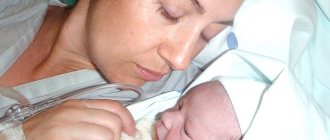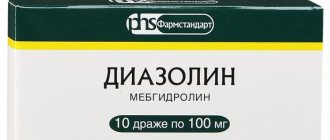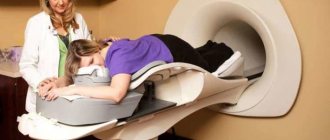According to a common point of view, if a runny nose is treated, it goes away in seven days, if left untreated, then in a week. It’s one thing when an adult has a cold, it’s quite another thing when a baby catches a cold. In the latter case, you should under no circumstances let the disease take its course.
Children often suffer from rhinitis
An older child may tell his parents that he has a stuffy nose. The baby not only does not have the opportunity to complain about his health, but also does not know how to blow his nose on his own. Therefore, mothers and fathers need to learn to determine, based on indirect signs of illness, that something is wrong with the baby.
Different types of runny nose
Rhinitis is divided into groups depending on the nature of the process occurring in the nasal cavity (for example, catarrhal or purulent) and the cause that provoked the development of the disease.
Infectious runny nose
The symptoms of rhinitis caused by infection depend on the stage of development of the disease. At the initial stage, discomfort appears in the nose and the sense of smell decreases. The baby feels lethargic and weak, and his appetite worsens.
Then the catarrhal phase begins: the child’s nose stops breathing, mucus accumulates in the sinuses and nasopharynx. It has a liquid consistency and light color.
Nasal congestion may be accompanied by a cough and fever.

It is unacceptable to ignore a runny nose in infants
The catarrhal stage of rhinitis development is replaced by a phase of mucopurulent discharge. The mucus in the nose becomes cloudy, acquires a yellowish or greenish tint, and thickens. She gives off an unpleasant odor. Despite this, the baby gradually begins to feel better and recovers.
Allergic runny nose
With an allergic rhinitis, a child experiences itching, sneezing and nasal congestion. When a baby sneezes, a certain amount of mucus is released. Often, with rhinitis of allergic origin, manifestations from some other organs can be observed:
- lacrimation;
- rashes on the skin;
- redness of the sclera of the eyes;
- cough.
Important! The temperature during allergic rhinitis rarely increases.
Most often, to treat allergic rhinitis, it is enough to eliminate the allergen and take an antihistamine recommended for use in infants.
Vasomotor rhinitis
Excessive duration of the disease with adequate treatment may indicate vasomotor rhinitis. The main symptoms of this runny nose are difficulty breathing, swelling and nasal discharge. In most cases, the child has a headache, decreased appetite, and the functioning of taste buds is disrupted.
The basis of the disease is a violation of the vascular tone of the nasal mucosa, and not an inflammatory process. Therefore the temperature does not rise.
Important! Parents should start to worry if a runny nose lasts more than three weeks. In this case, the baby must be shown to a specialist. If rhinitis is not treated promptly, the disease can become chronic.
Breast milk for a runny nose
Baby restlessly eats breast milk
Many parents try to treat their young children for rhinitis using “grandmother’s” methods, one of which involves instilling mother’s milk into the nose.
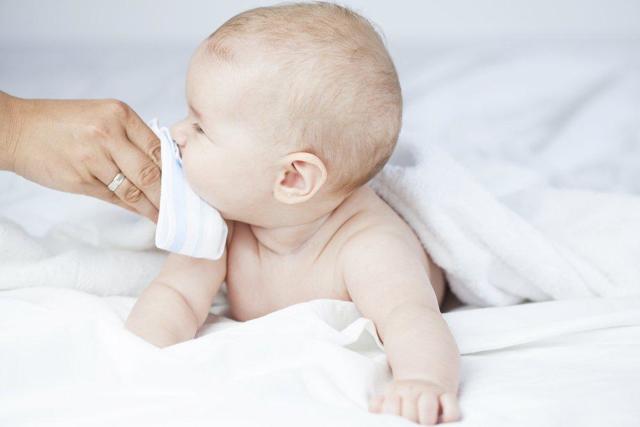
Using breast milk for treatment will cause more harm
Composition of breast milk
Breast milk itself has a very useful composition, allowing the baby to receive all the nutrients necessary for active growth and development:
- biologically active water (78%);
- proteins (1%);
- fats (4%);
- carbohydrates (7%);
- vitamins, hormones, growth factors, etc. (1%).
Why is milk used for treatment?
The idea of putting breast milk in the nose of a newborn with a runny nose did not appear yesterday. She is many centuries old. In the old days, traditional medicine was very poorly developed; many residents of remote villages were deprived of it altogether. Thus was born the idea of using the mother product as a medicine. Many confirm the effectiveness of the method.
Modern medicine answers the question of whether it is possible to try dripping breast milk into a baby’s nose with a sharp negative. There are very specific reasons for this, which should not be ignored.
The dangers of breast milk
Experts consider it unacceptable to use breast milk as medicine. It contains lactic acid. When it enters the nasal cavity, an environment favorable for the proliferation of various pathogenic microbes is formed. As a result, the baby will not only not be freed from a runny nose, but will also develop another, more serious and health-damaging ailment.
Possible complications
When breast milk is used to treat a runny nose, the bacterial infection may spread beyond the sinus lining. This will lead to pharyngitis, otitis, or even laryngitis with the development of false croup.
Doctor Komarovsky's opinion
Is it possible to bathe a child with a runny nose without fever?
The famous doctor Komarovsky believes that the mother’s breast, along with its contents, should under no circumstances perform a healing function.
The specialist is confident that breast milk is not only useless in ridding the baby of rhinitis, but can also cause him some harm.
One drop, of course, will not kill the baby, but if you use the folk remedy regularly, serious problems can arise.
How to cure a runny nose
Is it possible to give manta to a child with a runny nose or cold?
To treat a runny nose, it is recommended to use the methods proposed by traditional medicine: drip vasoconstrictor or antiallergic drops into the nose, use antiviral and antipyretic drugs, rinse the child’s nose, etc.

Treatment for rhinitis should be prescribed by a pediatrician
Despite the fact that rhinitis is not considered a serious disease, you should consult your pediatrician for treatment. The doctor knows best how many drops to put into the nose and how many tablets to use in a particular case.
Possible complications after a runny nose
The most common complications after a runny nose include:
- sinusitis;
- tonsillitis;
- pharyngitis;
- tracheitis;
- bronchitis;
- tonsillitis;
- pneumonia;
- inflammation of the skin on the wings of the nose;
- transition of rhinitis to a chronic form, etc.
Prevention
Preventing a runny nose is easier than curing it. Prevention of the disease comes down to following these simple recommendations:
- Regularly carry out wet cleaning in the children's room.
- Limit your baby's potential contact with possible allergens as much as possible.
- Regularly ventilate your child's room.
- Include foods containing vitamins and microelements in sufficient quantities in your baby’s diet.
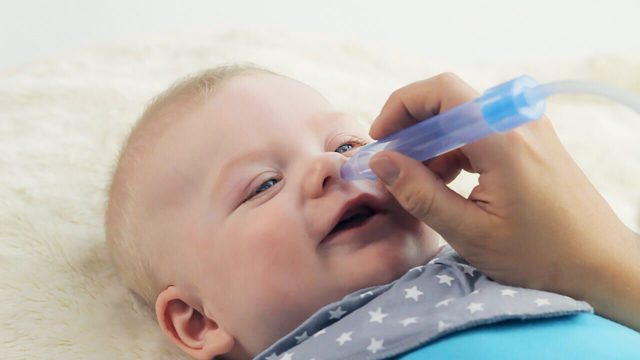
The child's health needs to be monitored regularly
Few parents manage to raise a child and never experience a runny nose. Illness is not a reason to panic, but an incentive to make every effort to cure the baby.
Video
Is it possible to treat a baby's runny nose with breast milk?
Breast milk from a running nose is recommended by grandmothers. This is how children of past generations were treated. Women believe that breast milk has healing effects and can even treat dangerous diseases.
Natural baby food actually contains a lot of useful substances. However, modern pediatricians advise not to put it in the baby's nose or eyes. Doctors consider this treatment method useless and even dangerous.
How did the recommendation to be treated with breast milk come about?
Dripping breast milk into the nose is usually recommended for women of past generations. For many decades, this method has successfully helped children suffering from colds and rhinitis. Natural baby food contains immunoglobulins. They stimulate the child’s immunity and increase the body’s resistance.
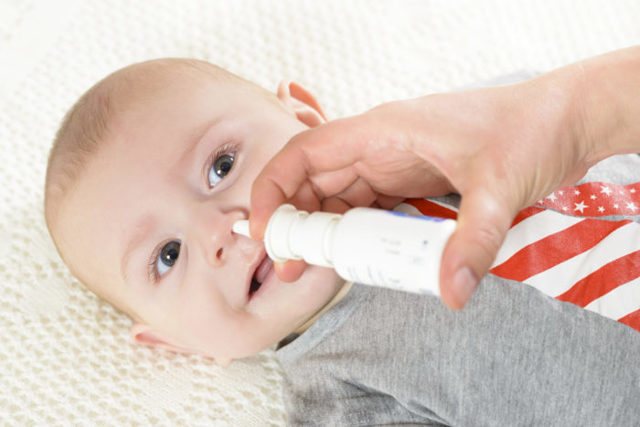
Treatment for breast milk rhinitis is believed to be:
- increases local immunity;
- moisturizes the mucous membrane in the nasal passages;
- softens crusts;
- destroys infectious agents, viruses and bacteria.
Like most modern pediatricians, Dr. Komarovsky does not recommend putting breast milk into the nose.
This treatment was used because medicine was undeveloped. Mothers do not have access to effective medicines and are sometimes forced to rely on folk remedies.
With the development of medicine, alternative methods of treatment have faded into the background. They are still recommended by grandmothers, especially for young children. However, such methods are not recognized by traditional medicine. Breast milk that drips into your eyes and nose is pointless. If you have complaints, it is better to contact your pediatrician and get an individual treatment plan with safe medications.

Should I put it in my eyes or nose?
Grandmothers recommend that new mothers stop breast milk every time they breastfeed if their nose starts to hurt. The more often the procedure is performed, the faster the child recovers. This is not entirely true. Modern pediatricians, eye and ear, nose and throat specialists tell why conjunctivitis and rhinitis in a newborn cannot be cured with breast milk.
- Breast milk is a nutritious liquid containing various beneficial components. It is considered an ideal food for a child and helps build a strong immune system because it contains antibodies. However, human milk is not capable of destroying bacteria and viruses. It works inside the body and does not have a local antiseptic effect. Pouring breast milk into a baby's nose is simply pointless.
- The nasal mucosa self-cleanses due to the ciliary epithelium and secretory activity. The resulting mucus washes away harmful microorganisms and protects the internal cavity of the nose. When you put milk in a baby's nose, the eyelashes stick together. You will no longer be able to remove mucus and clear your nasal cavity. This can lead to complications. Therefore, the use of this type of treatment is dangerous.
- Sugar is found in breast milk. They create a breeding ground for bacteria. If you do this procedure regularly, you will get an infection in your nose. For the same reason, milk should not be buried in the eyes of a newborn. Unconventional treatment methods will lead to dangerous bacterial diseases.
Breast milk for a runny nose in infants: is it possible to drip into a child’s nose?
A runny nose is a symptom that occurs in many diseases. Most adults do not take this seriously, and heavy discharge is uncomfortable for them only in the first days. How difficult it is for small children and infants. Discharge quickly blocks the narrow nasal passages, which leads to rapid swelling of the mucous membrane. Children can hardly breathe through their mouth, which leads to anxiety and sleep disturbances.
A baby's runny nose is much more problematic than an adult's runny nose.
Nasal correction interferes with the baby's normal breathing, bottle feeding, and breastfeeding. They refuse food and lose weight. The disease drags on because the body does not receive enough nutrients and immunity decreases. When the infection spreads, pharyngitis is added to the runny nose, complications such as bronchitis, otitis and sinusitis may occur.
Grandmothers suggest sprinkling breast milk on the baby's nose. These tips are passed down from generation to generation because for many centuries people have been treated using traditional medicine.
Elders in the family believe that breast milk with runny nose can actually help fight the disease. We should use it regularly on our nose, and very soon the broken farmer will retire.
This is true?
Breast milk has a runny nose
Breast milk for a runny nose: pros and cons
The older generation and traditional healers explain the positive effect of breast milk on a runny nose by the fact that it contains maternal antibodies, which help the child’s body resist viruses and bacteria. In fact, a large amount of immunoglobulins in milk contributes to the formation of immunity in a child, but only if the newborn eats them.
Coated milk from a runny nose can only worsen the child's condition
Rising to the mucous outflow, milk antibodies do not protect the body from infection, since they work only in blood plasma.
Breast milk for a runny nose can 'help' in cases where the illness would go away without treatment. It softens the dried crust, but there are many other effective ways to do this.
Grandmother's advice to drip breast milk into your nose while your nose is running can be called harmful.
Harm from using breast milk for a runny nose
By extracting breast milk for bacterial rhinitis, the mother herself, unwillingly, helps transmit the infection to the sinuses and throat.
This is associated with serious complications: otitis media, pharyngitis, sinusitis, which develop within several hours and require hospitalization. So it is harmful to breast milk when it drips into the baby's nose.
Treatment must be approved by a doctor and specific medications must be used that are safe for children.
How to help a baby with a runny nose?
For the depriver Leakage of fluid, constant sneezing, irritation of the skin under the nose, restlessness, refusal to eat, lethargy, fever should be vigilant and forceful. The child’s illness is always more severe, up to one year. The child cannot blow his nose, and parents cannot always blow his nose effectively.
The nasal passages and nasal cavity in infants are small, slimy, sensitive, vulnerable and swell quickly. The swelling is especially pronounced on the first and second days. This is the most turbulent time for the baby and his parents, who have difficulty feeding milk, distracting and calming the baby. Swelling drops gradually appear, the discharge thickens and crusts form.
INTERNATIONAL: How to properly clean a newborn baby's nose?
Humidifying the baby's room
Pay attention to the indoor climate, ventilate more often, and humidify the air in winter
It is important to pay special attention to the microclimate in the house during the baby’s illness.
Dry air in the heat and during the heating season dries out the mucus in the nose. The resulting crusts are difficult to remove without causing pain to the child.
In addition, the mucus itself contains many substances that can act against a runny nose. For their effectiveness, the viscosity of the mucus must be optimal.
Moisturize the mucous membranes:
- regular wet cleaning;
- drinking regimen (frequent application to the chest, water from a spoonful of bottles);
- walks in good weather (without fever);
- buried in a salt outflow;
- inhalation with alkaline mineral water or salt solution using a nebulizer for nursing infants.
Is it possible to drip breast milk into the nose of infants with a runny nose?
When a child gets sick, the question arises of how to treat him. You don’t always want to resort to drug treatment, especially for infants. Mothers are trying to try alternative treatment, one of which is breast milk. It not only serves as nutrition, but also has the ability to fight the runny nose.
Runny nose in a small child
When a child under one year old gets sick, he cannot describe his sensations and pain.
A disease such as a runny nose, without treatment, can spread pathogens to other organs . This is due to the structure of the nasopharynx and mucous membrane.
As a result, the infection quickly descends to the lower respiratory organs. Complications of a runny nose include otitis media, bronchitis, laryngitis, and pharyngitis.
Due to swelling and inflammation of the nasal passages, it becomes difficult for the child to breathe. Infants cannot blow their nose out of the accumulated mucus, and the infection begins to intensify its effect every day. Appetite disappears, the baby sucks milk intermittently, becomes capricious and irritable, and his sleep is disturbed.
The benefits of a magic drink
Is it possible to put breast milk in your nose if you have a runny nose? Undoubtedly, it contains many useful substances, including antibodies that can resist infections. They form the child’s immunity at the moment when he feeds on mother’s milk. It is necessary to take into account the fact that such immunoglobulins are effective only when they are in the blood. They get there from the child's stomach.
By dripping any milk into your nose, you can create even more favorable conditions for the proliferation of pathogenic microbes. Lactose will take care of this, which will feed microbes and viruses. Bacterial rhinitis may develop. Further digging can lead to even more serious problems.
In addition, the mucus that appears in the nose as a result of a virus or bacteria is a response from the body. It contains much more protective substances than milk.
If a woman decides to use a similar method for a runny nose in a baby, then she should adhere to the following recommendations.
- You can drip up to four times a day.
- It is enough to drop 2 drops of breast milk into each nasal passage.
- You can instill it in its pure form, but it is better to dilute it with saline in a 1:1 ratio. This will prevent the risk of milk turning into a thick curdled mass.
- Before the procedure, you should clear your nose of mucus.
- After instilling milk, after a while you need to clean the nasal passages again.
What is the advantage of this treatment
- This method promotes good hydration of the nasal mucosa. This relieves nasal congestion and improves breathing.
- You can put breast milk in your nose if crusts have appeared in it.
Thanks to this, they soften and do not cause discomfort. - Thick mucus thins out and comes out faster.
It is better to use this method for preventive purposes.
In the case where the infection has taken over, you should not count on a speedy recovery in this way.
How to quickly get rid of a runny nose
To help your child get rid of a runny nose in a short time, you need to consider some points.
- To free your nose from accumulated mucus, you need to purchase a special aspirator from the pharmacy. With its help you will quickly and easily remove mucus.
- Effective are saline solutions, which you can buy at the pharmacy or make yourself. Buy the medicine only in drops.
- It is important to monitor the temperature and humidity in the room. Dry and cold air further aggravates the course of the disease.
- If there is no temperature, the weather is warm and dry outside, then walking is recommended.
- It is imperative to give your child warm clothes. Make sure your feet are warm.
- The baby should be put to the breast as often as possible and, if necessary, given additional fluids. This will thin out the thick mucus.
- If treatment is started late or does not help, it is necessary to use medications that will cope with microbes.
- In some cases, local antibacterial drops are prescribed for a runny nose.
Any drops can only be prescribed by a doctor. It is important to dose the medicine correctly according to the child's age, weight and health status.
A runny nose is not a harmless symptom
In young children, a runny nose can lead to more serious problems in the body. You should definitely consult a doctor in the following cases:
- high temperature rose against the background of a runny nose;
- the duration of the disease exceeded two weeks;
- sleep disturbances have appeared, the child does not eat well, is constantly irritated and capricious;
- there was a cough.
When clear mucus turns yellow or green, drug treatment is necessary. The child should be shown to a doctor (ENT specialist or pediatrician).
Milky crusts in the nose are the result of improper feeding
In some cases, mothers notice milk residues in the baby’s nose without special instillation. If the rules are not taken into account during breastfeeding, regurgitation may occur through the nasal cavities. This is harmful for the child because:
- the mucous membranes of the nose are exposed to hydrochloric acid and pieces of milk that has already coagulated in the stomach;
- adenoids and polyps may develop;
- dry crusts form in the nose;
- breathing becomes difficult.
Therefore, it is important for the mother to properly attach the baby to the breast during feeding. The head should be slightly raised. Before eating, you can do a light massage in the form of circular movements. After feeding the baby, you should carry him in your arms in an upright position for some time. It is important not to overfeed the child and maintain intervals.
If any problems occur in the health of a child under one year of age, you should consult a pediatrician. You should not listen to the opinions of other mothers and relatives - this will avoid complications. Modern methods of treating diseases allow you to get rid of a runny nose quickly and without unnecessary harm.
Source: https://grudnichky.ru/lekarstvo/moloko-v-nos-grudnichkam.html
Breast milk for a runny nose in infants: treatment and is it possible to drip
Almost all colds in babies start with a cold, and not all parents rush to take medicine. The most commonly used folk remedies, especially breast milk in the nose for colds. Thanks to useful substances such as immunoglobulin, it helps to activate local immunity.
Let's see if we can bury the milk when we get a cold?
What do you need to know about manifestation?
These are infants and toddlers who have the greatest ability to survive upper respiratory tract infections. A runny nose in infants usually begins suddenly and progresses quickly. The difficulty is that children cannot yet breathe through their mouths.
If breathing is difficult, the child may lose appetite, and the general condition may worsen. You may also notice a number of signs indicating a lack of oxygen (skin sluggishness, trouble sleeping).
The following symptoms are typical for rhinitis:
- appears in nasal passages;
- the child is constantly in a mood;
- the state becomes lethargic;
- sleep is disturbed;
- Appetite is reduced or absent;
- pale skin;
- refuses to breastfeed;
- sniffing sounds are heard when breathing.
The biggest problem for doctors and parents is the drainage of the nasal passages: newborns do not yet have the ability to suck their nose.
Composition of milk
Before we talk about whether you should use breast milk as a remedy for a runny baby's nose.
Milk contains many beneficial substances that help children develop normally in infancy. It is rich in vitamins, minerals and acids of organic origin. All these components together serve to strengthen the child’s immune system.
The main components in the composition are:
- protein. Casein protein and whey support the active development of skeletal bones and muscles.
- lactose. Thanks to this, carbohydrates enter the body, normalizing the functioning of the central nervous system.
- Several fatty acids. They improve the function of the gastrointestinal tract.
- Vitamins. They strengthen general and local immunity.
- Micro- and macroelements. They are responsible for the proper growth and development of skeletal bones and muscles.
- antibodies. They protect the body and prevent the penetration of harmful microbes and viruses that can cause acute respiratory diseases.
Many elderly people give breast milk with a runny nose, which has healing properties produced by maternal antibodies that help the baby's body fight viruses and bacteria.
Yes, the immune system will be stronger, but only if the child eats milk.
If you put milk in your nose, the beneficial properties of the product do not provide any protection: the effectiveness of antibodies is activated only in the blood plasma.
Breast milk can only be obtained after drug treatment for a runny nose. It can be used to get rid of crusts that have dried out in the nasal cavity, but there are many other remedies.
When we talk about direct treatment with breast milk, it is instilled into each nostril at a rate of 2 drops. Can be used as a pure product or saline solution when diluted in a 1:1 ratio. Before breast milk can drip into the nose, the nasal cavity must be thoroughly washed.
Breast milk for a cold is probably not a good cure. At best, it will moisturize the nose and make breathing somewhat easier during congestion. The spill softens the crusts covering the mucous membrane, and the mucus itself liquefies.
Dangerous aspects of such a remedy
The main harm that treatment of mammary rhinitis can cause is an increase in the infectious form. The lactose contained in the product becomes a favorable environment for pathogenic microorganisms that provoke pathogenic rhinitis - the appearance of purulent discharge in the nozzles and constant filling.
When milk gets into the nasal passages, the infection begins to spread further throughout the body - in the throat and sinuses. There may be complications of a very serious nature, such as pharyngitis, otitis media, sinusitis. All these diseases are very dangerous and often end in hospitalization of the child.
Before instilling breast milk into the nose, it is recommended to consult a doctor and follow his recommendations, as well as use medications that do not harm the baby’s body.
Using breast milk for a runny nose in a child
Almost always, the very first sign of colds in children is a runny nose, and most parents try to cure it without using medications. One of these folk remedies is breast milk. Currently, breast milk is widely used for the common cold, because it contains a large amount of useful substances - immunoglobulins and antibodies that produce local immunity in the baby's nose.
Is this remedy effective?
Despite the prevalence of this method of treating a runny nose in infants, some mothers still doubt its effectiveness, so they wonder whether breast milk really helps with a runny nose. According to pediatricians, mother's milk can increase the baby's body's defenses, but it cannot be used as a medicine because it does not have a therapeutic effect on the mucous membrane.
In fact, milk is never used as a medicine; it does not even have a strong disinfectant effect on the mucous membrane. Some experts even talk about the dangers of using this method of therapy, since milk can clog the nasal passages, making it difficult for the child to breathe through the nose. In addition, it is known that milk is a favorable environment for the development of various microorganisms and bacteria. Also, milk cannot be a medicine for the reason that the concentration of protective organisms in the mucus contained in the nasal cavity is much higher than in breast milk.
It will be much more beneficial if milk is not dripped into the nose, but simply fed to the child, because in this way the baby’s body produces antibodies that create a barrier to the spread of pathogenic microorganisms. At the same time, even if the mother gets sick, there is no need to interrupt breastfeeding, however, young mothers have a question about whether a cold is transmitted to the baby through breast milk. To which pediatricians give a unanimous answer: milk protects the child’s body from the effects of pathogenic bacteria.
How to treat a runny nose?
Place breast milk into the baby's nose, 2 drops into each nostril several times a day.
However, there is another category of women who are of the opinion that there is no better medicine for their child than breast milk. They are confident that milk has high antibacterial properties, due to which pathogenic bacteria are destroyed. When treating a runny nose with breast milk, the baby is traditionally instilled into the nasal cavity . You need to drip several times a day, 2 drops in each nasal passage. You can use it in its pure form or dilute it with saline in a 1:1 ratio. Before treating a runny nose using this method, you should free the child’s nose from the mucus accumulated in it, thoroughly rinsing the nasal cavity.
Even if this remedy does not have a therapeutic effect on the nose, it will moisturize it well, improving breathing when the nasopharynx is congested. The use of breast milk will help soften the crusts that have formed on the mucous membrane of the baby's nose, as well as thin the mucus. After the nose has been dripped, the accumulated mucus should be removed using a rubber bulb.
Using this method to treat a runny nose, you should not count on a quick recovery, since this method most likely has a preventive effect than a therapeutic one. This therapy should be used very carefully; it is best to dilute the milk with saline solution, since if it gets into the paranasal sinuses, it can turn into a curdled mass, which is very difficult to eliminate.
It is important to understand that such a remedy was used quite a long time ago, when medicine did not have such a large number of effective medications. If parents are afraid of harming their baby by using them, they should opt for homeopathic remedies for the common cold. In order to avoid the occurrence of unpleasant consequences of such treatment, it is better to give preference to other folk remedies that are effective, safe and time-tested.
NasmorkuNet.ru
Breast milk for a runny nose in infants: can it be given to a child?
Breast milk is still used by some mothers as a cure for runny nose in newborns. Most doctors are skeptical about this method and claim that the lack of effectiveness is caused by instillation of baby milk into the nose.
Can a baby's nose drip milk? Is this treatment effective? What can be used to replace breast milk? How to bury it correctly? What does Dr. Komarovsky think about the benefits of breast milk for a runny nose?
Is it possible to put breast milk in the nose when a child has a runny nose?
A runny nose in a child is a symptom of an infectious or viral disease. Babies have difficulty with nasal congestion - sleep and appetite worsen, and general well-being worsens. The only way to get rid of this symptom is by emptying the nasal passages due to lack of snoring ability.
The case for breast milk treatment
Treatment with breast milk is imposed on young mothers of the older generation - grandmothers and great-grandmothers, who have always used it on their babies due to runny nose. They claim that in the past there weren't as many drugs in pharmacies, but children were less sick.
The views of modern parents have changed significantly. The only argument in favor of treating a runny nose with milk is its ability, like any other liquid, to moisturize the nasal mucosa, which leads to intensive outflow of crusts. Many grandmothers also believe that it has strong antibacterial properties, but this opinion has not been scientifically proven.
What do opponents of this therapy method say?
Many new mothers and doctors claim that this method is not beneficial. In some cases, this type of treatment can lead to serious consequences. Including:
- inflammation of the mucous membrane. Breast milk is a habitat for various microorganisms, which, upon contact with the mucous membranes of the nose, begin to actively multiply and turn into pathogenic bacteria. The nasal canals may be filled with Staphylococcus aureus, Klebsiella rhinoscleroma, or Candida fungus.
- Closing the arches. Scooping milk can cause crusts to form and thus block the nasal passages and make breathing difficult.
- Development of complications. Pediatricians do not approve of this method and insist that it is ineffective. When a mother treats her child this way, she is wasting her time. Improper therapy leads to bronchitis, sinusitis and other inflammatory diseases of the ENT and respiratory tract.
The effectiveness of sanitation of the nasal passage depends on the content of the drug. Drops and sprays containing saline or sea salt help relieve inflammation and symptoms.
Breast milk enriched with immunoglobulin benefits only the intestines, where it promotes the formation of healthy microflora.
Accordingly, a nursing mother should place her baby on her breast as often as possible to strengthen the immune system and help the baby get rid of the disease as quickly as possible.
Rules for the procedure
If the mother is still convinced of the effectiveness of the procedure, she should first become familiar with all the rules of the procedure. Fresh milk is needed for funerals.
This is a favorable environment for various microorganisms, which, under suitable conditions, begin to multiply and subsequently cause harm to health.
If milk has been at room temperature for half a day, it cannot be used.
Before burial, the nose must be cleared of mucus using a baby bulb or pacifier.
Some parents use cotton wool pads coated with baby oil to remove concentrated mucus from the nasal passages. Excavation should be carried out at intervals of 3 hours, i.e. 4-6 times a day.
The procedure requires a pipette. A maximum of 2 drops can be administered simultaneously into each nasal passage.
When using milk as the main remedy for the treatment of a runny nose, parents should monitor changes in the child’s condition during therapy. If the desired result is not observed a few days after starting treatment, the mother should consult a doctor.
In what cases is it strictly forbidden to drip milk into a child’s nose?
Lack of effectiveness is not the only problem that a mother may encounter when using this method.
deterioration of the condition, development of complications in the form of inflammatory diseases of the upper and lower respiratory tract - this is not the entire list of consequences of using breast milk during burial.
They mainly affect those children in whom small patients are contraindicated for this method of treating the common cold:
- Lactose intolerance. Allergic reaction to milk therapy - itching, rash, Quinque swelling.
- Heavy running nose. If a child has complications - a smelly runny nose, yellow or green color of the nasal mucosa and itching in the nose or ears, their use will not be beneficial, but on the contrary will worsen the child’s condition.
- Physiological rhinitis. The most important method of treatment and prevention is to constantly humidify the room in which the child sleeps.
How to get rid of a runny nose in an infant?
Answers:
EN
drops
Satan
Anoint the bridge of the nose children. cream, then apply iodine to freckles \it will help immediately if you do this as soon as you notice a runny nose\.
Oksana Zhokhova
drip breast milk into the spout! everything will go quickly.
Gulyaeva Maria
For such babies, it is best to use the following products: 1) Aquamaris (to rinse the nose) 2) Protorgol (you need to order it at the pharmacy - find out where they make it) - collodine silver. 2-3 drops 3 times a day. 3) Homeopathic spray - euphorbium compositum (price is approximately 300-400 rubles, but it is worth it and will not harm the baby). 1-2 doses 3-4 times a day. 4) You can also drip carrot or beet juice - but before that, dilute it with a little water or oil and try it on yourself first... 5) Apply oxolinic ointment to your nose. Here are my recommendations and advice. Health to the baby and a happy childhood!
Oksana Barbashina
We have the same problem, we drip aquamaris, suck out the snot with an aspirator, very carefully according to the instructions, and drip Nazivin for children. 3 times a day, better for the next one. day
Just LANA
Milk is more of a breeding ground for bacteria than an antiseptic. Drip vasoconstrictor drops (if urgently needed), wait 10 minutes, clean the nose with Salin, Aqualor baby or others, drip medicinal drops (Protorgol, Derinat, Interferon, lubricate the sinuses inside with sea buckthorn oil, you can drip Vitaon-lux oil (if you are not allergic) !) If nasal discharge has turned from watery to purulent, this means that a bacterial infection has set in and treatment with antibiotics may be necessary. If a child has a high fever against the background of a runny nose, there is a risk of an acute, dangerous infection. If, simultaneously with a runny nose, a child has an inflamed throat or shortness of breath appears - there is a risk of tonsillitis (sore throat) and pneumonia. If a child refuses to eat or drink because of a runny nose, the child may lose weight and become weak. If a runny nose continues for more than two weeks, there is a reason to go to a cotolaryngologist. Don’t get sick!
Alla Konstantinova
protargol (silver-based drops)
Ekaterina Kushnir
Place breast milk in your nose.





